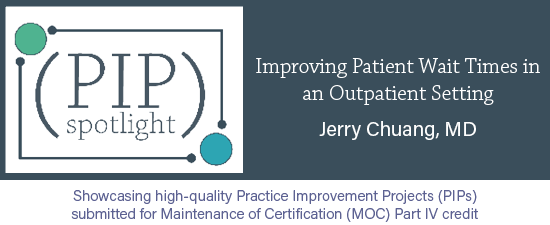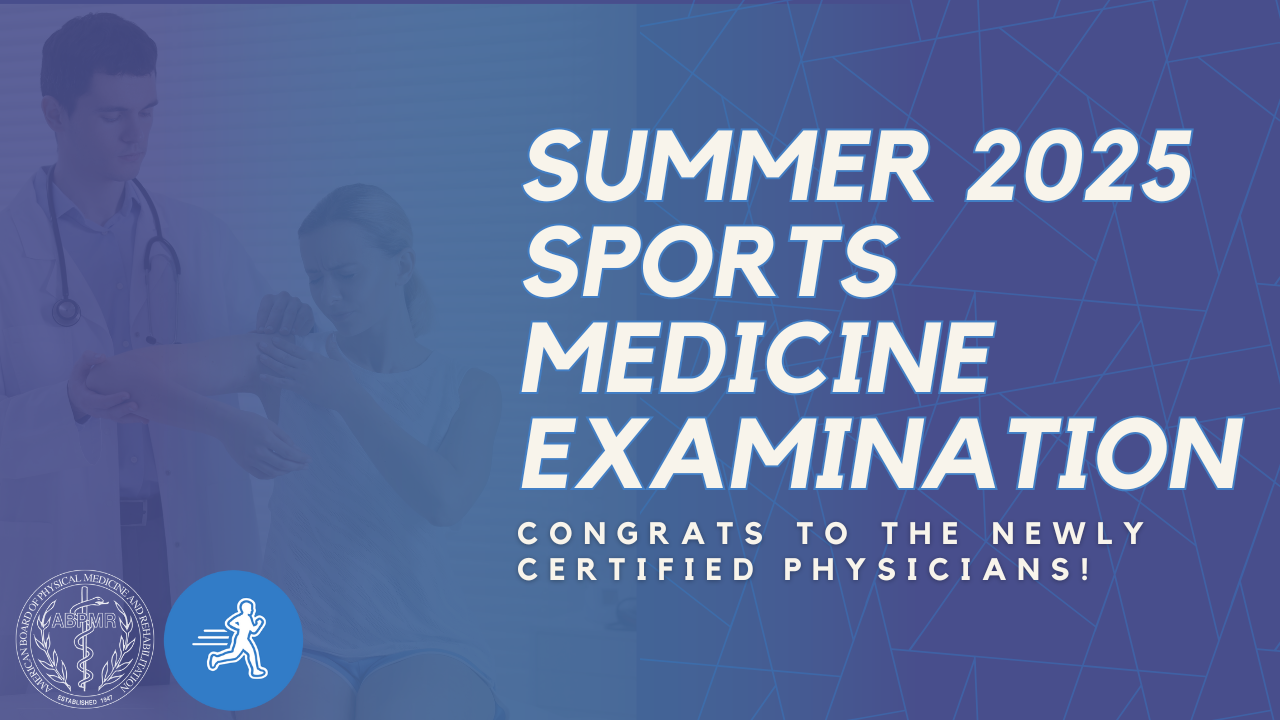CC
PIP Spotlight: Improving Patient Wait Times in an Outpatient Setting

As the supervising PM&R physician at an outpatient rehabilitation clinic, the goal of Jerry Chuang’s practice improvement project (PIP) was to identify ways to improve patient flow in order to decrease long patient wait times and increase patient satisfaction.
The PIP Spotlight is a periodic feature on News Center to highlight exemplary Practice Improvement Projects submitted by your fellow diplomates for Maintenance of Certification (MOC) Part IV credit.
Diplomates can use the PIP Spotlight as a tool to model additional PIPs on what you read here, or as a way to connect with other diplomates doing similar work.
Thanks to Dr. Chuang for his Practice Improvement Project submission!

What is the problem you are trying to solve?
We recognized the need for improvement of patient wait times at our outpatient rehabilitation clinic.
What data (objective measurements) do you have that supports this as a problem?
We used the EHR to log the number of minutes each patient waits to see the physician and found the average wait time was 42 minutes. I also interviewed and observed staff tasks performed during that time and noted that staff often had to wait for me to finish with a patient before they could room the next patient.
What is your opportunity statement? State the goal you hope to achieve.
We aim to improve patient wait time to 30 minutes within one month.
What is the underlying cause of the performance/quality problem?
Physicians and staff members on the unit/team met to discuss probable reasons for the long wait times. By analyzing the objective data from HER it was determined that the underlying causes of the performance/quality problem are:
- Patient flow: New consult and NCS/EMG studies take longer face to face time, which cause longer wait times for other follow up visits that have shorter face-to-face time.
- EHR: Using the computer in the physician’s office requires walking back and forth, resulting in a longer wait.
- Medical records: Missing medical records on a patient’s appointment day can result in the need to reschedule or wait for staff to request medical records from another facility.
- Check out: After appointments, I used the front desk for prescription scans and follow-up appointments, which interrupted other patient interactions at the front desk.

What change(s) did you implement?
- Patient flow: We decided to begin scheduling appointments by type of visit. All follow-up visits are scheduled from 1:30 p.m. to 3 p.m., then new consults from 3 p.m. to 4 p.m., and finally NCS/EMG studies between 4 p.m. to 5 p.m.
- EHR: I used portable laptop that allows me to use the EHR in exam rooms without needing to go back to the office.
- Medical records: We developed a pre-visit checklist that includes obtaining medical records, and we set up a notification to alert dedicated office staff to obtain medical records prior to the appointment date when an appointment is scheduled.
- Check out: We developed a check out sheet so I can write down follow-up appointments and other instructions. I also give prescriptions to patients to take directly to staff, eliminating the need to walk out to the front desk before seeing my next patient.

Did you achieve your goal or target from your opportunity statement? What data do you have to support your conclusion?
We reviewed our performance both at the midway point and at the end of the project. The patient wait time decreased from an average of 42 minutes to 32 minutes midway through the project. After we made several adjustments to new consultation visits and NCS/EMG studies, the average patient wait time further decreased to 24 minutes, which exceeded our goal.

Will you continue with the changes you have implemented?
We will continue all practice changes to sustain success. In fact, now sometimes I have to wait for patients to be roomed because I have already finished with the prior patients.
Furthermore since the project was complete, we noticed that while working on the office visit notes, I am sometimes not aware that another patient has been roomed. In order to further enhance patient flow efficiency, staff now bring the check in sheet directly to me when they have roomed a patient and completed vitals, so I know that the patient is ready.



